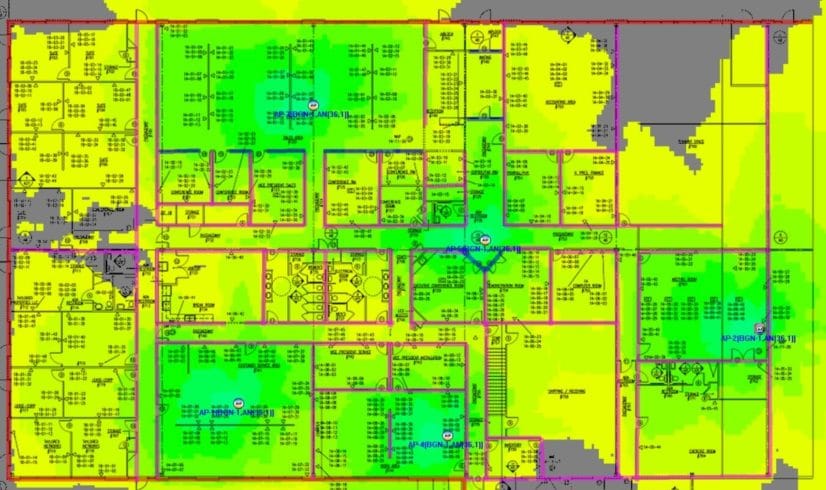In today’s world, wireless technology has become an integral aspect of our business environment. Advancement in wireless technology is increasing every day and with the right equipment and proper planning for your environment, you can start reaching speeds found only when you have a hardwired connection. Performing a wireless site survey will ensure you are getting the most out of your current or future network.
Installing or troubleshooting a wireless network is a methodical, step-by-step process that requires a lot of planning. Without the necessary due diligence, your business can be left with spotty and unreliable coverage, costing your business time and money in the long run.
Wireless Planning
First and most importantly, any wireless site survey should always start with your requirements. Then the survey will help you position the technology to fit those requirements. In planning, you must determine the number of devices you expect to serve, the type of traffic you expect on the network, the amount of throughput you want the network to provide, and the number of access points you need and where to mount them for optimal coverage. A common way to gather this information is to interview people such as site managers as well as the people who will be using the network. You can conduct interviews in person as well as send questionnaires to them.
Surveys
There are three basic types of wireless surveys that can be used to plan for or troubleshoot a wireless network:
Predictive Wireless Site Survey
A predictive site survey is performed without any type of field measurements. It uses RF planning software tools that can predict wireless coverage of the APs. To perform this site survey, a floor-plan drawing (AutoCAD, JPEG, PDF) is used along with information about the environment that can be gathered, i.e. types of walls and structures within the building that might hinder RF wireless radio signals. Predictive surveys can be used for buildings that have not yet been completed for budgeting purposes, or for small and simple wireless networks where an on-site wireless survey would not be financially feasible. If the predictive survey is performed by a capable technician with the proper site survey software, they can be fairly accurate in proper AP placement with only minor adjustments possibly needed after the wireless network is installed.
Passive Wireless Site Survey
Passive site surveys listen to existing access points and, outside your managed infrastructure, for signal strength, wireless interference, and AP coverage. Passive site surveys, in which surveyed Wi-Fi adapters don’t need to associate to the AP or SSID, give a good overall picture of the RF characteristics of existing wireless networks. A Passive survey can give you a clearer visual picture of your coverage area to identify dead zones within your wireless infrastructure.
Active Wireless Site Survey
This survey is performed after a wireless network has been just deployed, or to check the health of an existing network. It entails gathering very detailed information about your wireless infrastructure. An Active Survey measures signal coverage, throughput tests SSID and VLAN per AP allocation and behavior of data packets. This type of survey can be performed when an established wireless network is experiencing issues that may occur over time, which may be caused by internal changes within the network (e.g. configuration changes or a higher number of concurrent users), or due to external factors outside the network, such as additional interference from new networks or new non-network devices outputting signal.
Expectations from a Wireless Site Survey
A proper wireless survey will provide you with a visual representation of your coverage area as well as reports that detail all aspects of your wireless infrastructure. The reports should provide specific information about network traffic, throughput packet loss, physical (PHY) rates, and signal-to-noise (SNR) ratio for each AP in your wireless infrastructure.
You should expect the following information from a wireless site survey:
- Provide accurate information on the working condition of each current access point.
- Provide accurate information for access point locations.
- Provide detailed wireless coverage maps.
- Provide detailed data rates.
- Identify sources and locations of interference.
- Discover, and locate, rogue access points.
- Reveal coverage voids in existing deployment.
- Identify and classify neighboring networks and channel usage.
- Predictive and on-site surveys are consolidated into a complete report.
With the information you receive from a wireless site survey, you can troubleshoot existing problems – as well as optimize your network for peak and efficient performance to gain the most out of your wireless infrastructure. Taylored Systems can be your partner in planning, discovering, and optimizing your wireless network to better serve your business.

